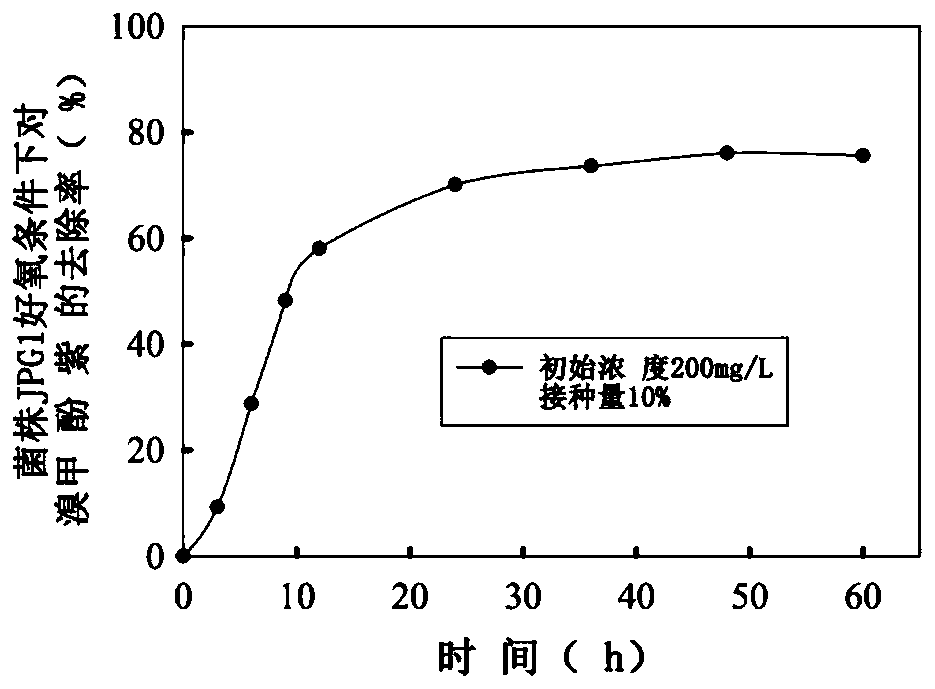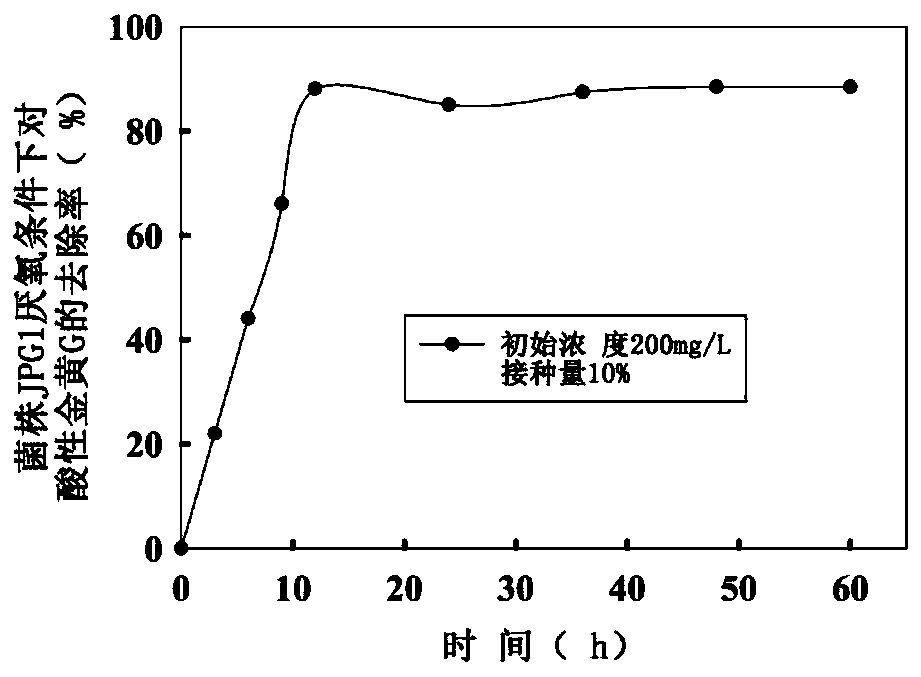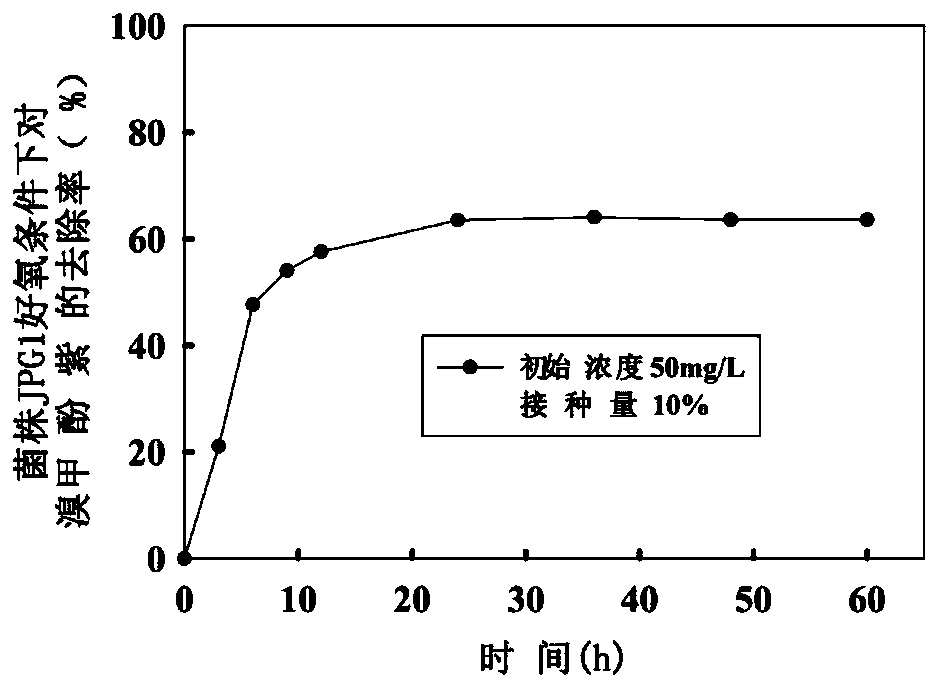Application of Citrobacter sp. in removal of dye wastewater
A technology for Citrobacter bacillus and dye wastewater, applied in the field of microorganisms, can solve the problems of difficult treatment, poor biochemical properties, decolorization of acidic golden yellow G and bromocresol violet, etc., and achieves the effects of efficient removal and low economic cost.
- Summary
- Abstract
- Description
- Claims
- Application Information
AI Technical Summary
Problems solved by technology
Method used
Image
Examples
Embodiment 1
[0034] Embodiment 1: Research on the removal of acid dye bromocresol purple wastewater by facultative anaerobic bacteria Citrobacter sp.JPG1 under aerobic conditions
[0035]Inoculate the facultative anaerobic bacterium Citrobacter sp.JPG1 into 100ml of sterilized LB medium, culture it in an incubator at 30°C and 120rpm for 12h, and transfer it when the OD600 is 1. 10% of the ratio was inserted into 200ml of simulated sterilized LB medium containing 200mg / L bromocresol purple dye wastewater, and the removal experiment was carried out on a shaker at 120rpm and 30°C under aerobic conditions. After cultivating for a period of time, , aspirate 5ml of culture solution, centrifuge at 10000rpm for 4min, and take the supernatant to measure the absorbance value. The results found that when the bromocresol purple dye wastewater concentration was 200mg / L, the initial inoculum size of the bacterial solution was 10%, and the p-bromocresol purple dye wastewater reached a removal rate of 73....
Embodiment 2
[0036] Embodiment 2: Research on the removal of azo dye acid golden yellow G wastewater under anaerobic conditions by facultative anaerobic bacteria Citrobacter sp.JPG1
[0037] The preserved facultative anaerobic bacterium Citrobacter sp.JPG1 was inoculated into 100ml of sterilized LB medium, cultured in an incubator at 30°C and 120rpm for 12h, and transferred when the OD600 was 1. When transferring, insert 200ml of simulated sterilized LB medium containing 200mg / L acidic golden yellow G wastewater at a ratio of 10%. After culturing for a period of time, absorb 5ml of the culture solution, centrifuge at 10000rpm for 4min, and take the supernatant to measure the absorbance. like Figure 4 Shown, the result finds that when the acid golden yellow G wastewater concentration is 200mg / L, the initial inoculation amount of bacterial solution is 10%, reaches 87.51% removal rate to acid golden yellow G wastewater in the time of 36h. After 60 hours, Citrobacter sp.JPG1 had a good rem...
PUM
 Login to View More
Login to View More Abstract
Description
Claims
Application Information
 Login to View More
Login to View More - R&D
- Intellectual Property
- Life Sciences
- Materials
- Tech Scout
- Unparalleled Data Quality
- Higher Quality Content
- 60% Fewer Hallucinations
Browse by: Latest US Patents, China's latest patents, Technical Efficacy Thesaurus, Application Domain, Technology Topic, Popular Technical Reports.
© 2025 PatSnap. All rights reserved.Legal|Privacy policy|Modern Slavery Act Transparency Statement|Sitemap|About US| Contact US: help@patsnap.com



